What is Marble inlay work?
Marble inlay work, often referred to as “Pietra Dura” or “Parchin Kari,” is a very old exquisite art form. Marble inlay work is a creative and intricate handicraft technique in which various coloured and shaped gemstones or semi-precious stones are used to create gorgeous designs on marble surfaces.
We, at Attari Marble Art, offer marble inlay flooring services all over the world. We have worked on marble inlay flooring for more than 20 years.
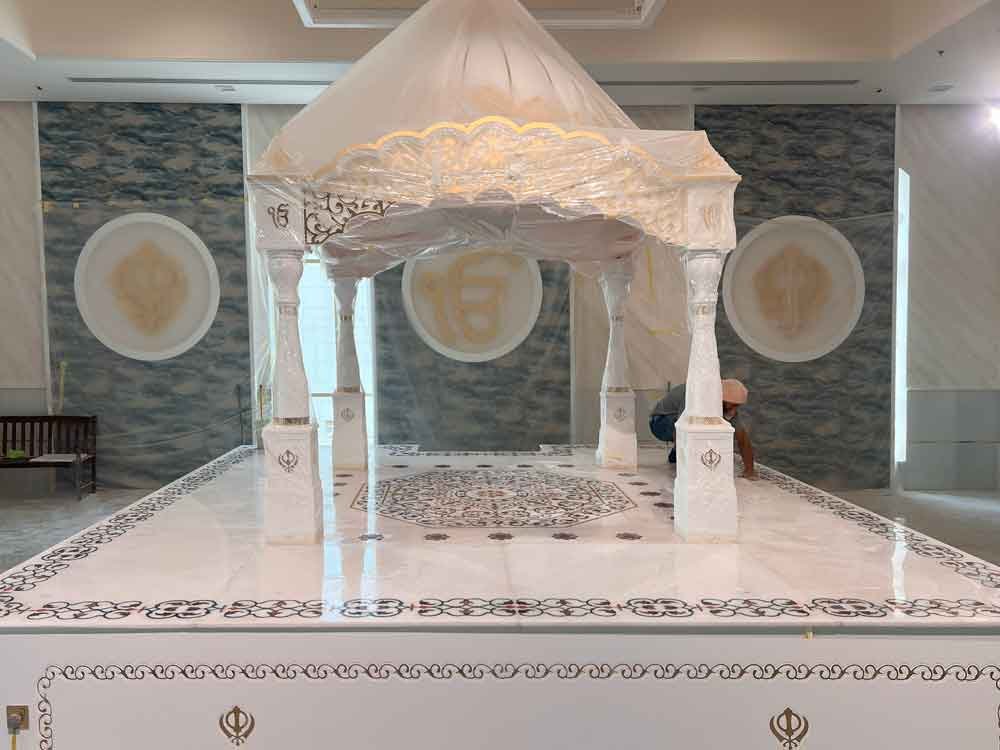

What is the history of marble inlay work?
- The art of inlaying gemstones and colored stones into floors and surfaces can be traced back to ancient times. It was practiced in ancient civilizations like Mesopotamia, Egypt, and Persia. These early artisans used inlay techniques to decorate jewelry, artifacts, and architectural elements.
- Marble inlay work gained prominence during the Roman Empire. Romans used it to decorate floors, walls, and furniture. This era saw the use of colored marbles, creating elaborate geometric patterns and intricate designs.
- The technique reached its zenith during the Italian Renaissance in the 16th century. Italian craftsmen perfected the art of Pietra Dura, creating stunning tabletops, cabinets, and wall panels adorned with intricate floral and geometric patterns.
- Marble inlay work was introduced to the Indian subcontinent during the Mughal era in the 17th century. The Mughals were masters of stone carving, and they used marble inlay work to decorate their palaces, mosques, and tombs. Indian artisans, particularly in Agra, developed their unique style of inlay work, often featuring intricate floral and motifs.
Marble inlay work often displays cultural and historical significance. In India, for example, it has been used to depict stories from mythology and to create intricate floral patterns. Today, marble inlay work remains a symbol of artistic finesse, cultural heritage, and timeless beauty. This art form’s journey through history reflects the enduring appeal of craftsmanship and creativity.
What are the materials used in marble inlay work?
Marble inlay work involves the use of various materials to create unique and colorful designs on marble surfaces. These materials play a crucial role in adding depth, texture, and vibrancy to the inlaid designs. The primary materials used in marble inlay work include:
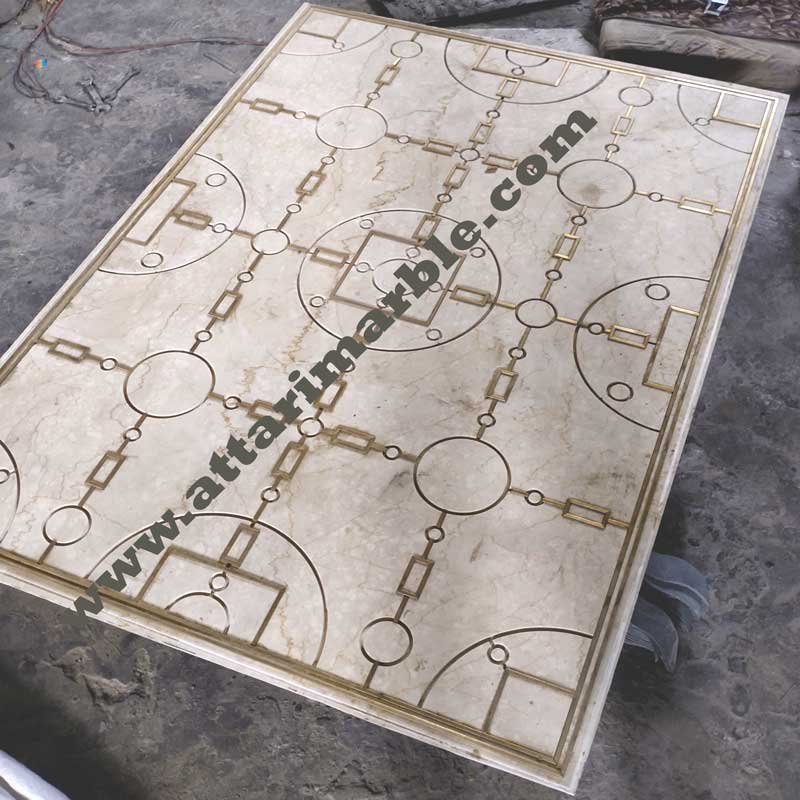
Marble
Marble serves as the base material onto which the inlay is done. It is often selected for its smooth and even surface, providing an ideal canvas for the intricate designs. White or light-colored marble is commonly used to highlight the colors of the inlaid materials.
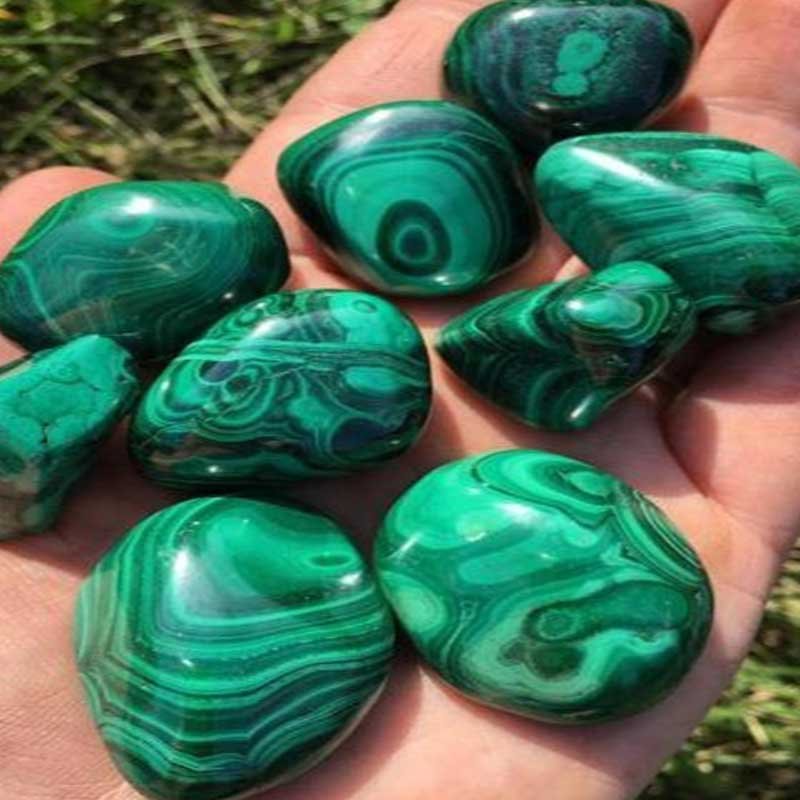
Gemstones
Various colored and semi-precious gemstones are the hallmark of marble inlay work. These gemstones include lapis lazuli (blue), malachite (green), carnelian (red-orange), onyx (black), turquoise (blue-green), and others. Each gemstone is chosen for its unique color and texture, contributing to the visual impact of the design.

Mother of Pearl
Mother-of-pearl, with its iridescent sheen, is frequently used to create luminous and pearlescent details in the inlay work. It adds a touch of elegance and shimmer to the designs.

Coral
Coral is another material that can add bright red or pink hues to the inlay patterns. It’s often used to create floral motifs and other colorful details.

Wood
In some instances, fine wood, such as rosewood or ebony, is used for inlay work. Wooden tesserae are carefully cut and shaped to fit into the marble base, adding a warm and natural texture to the design.
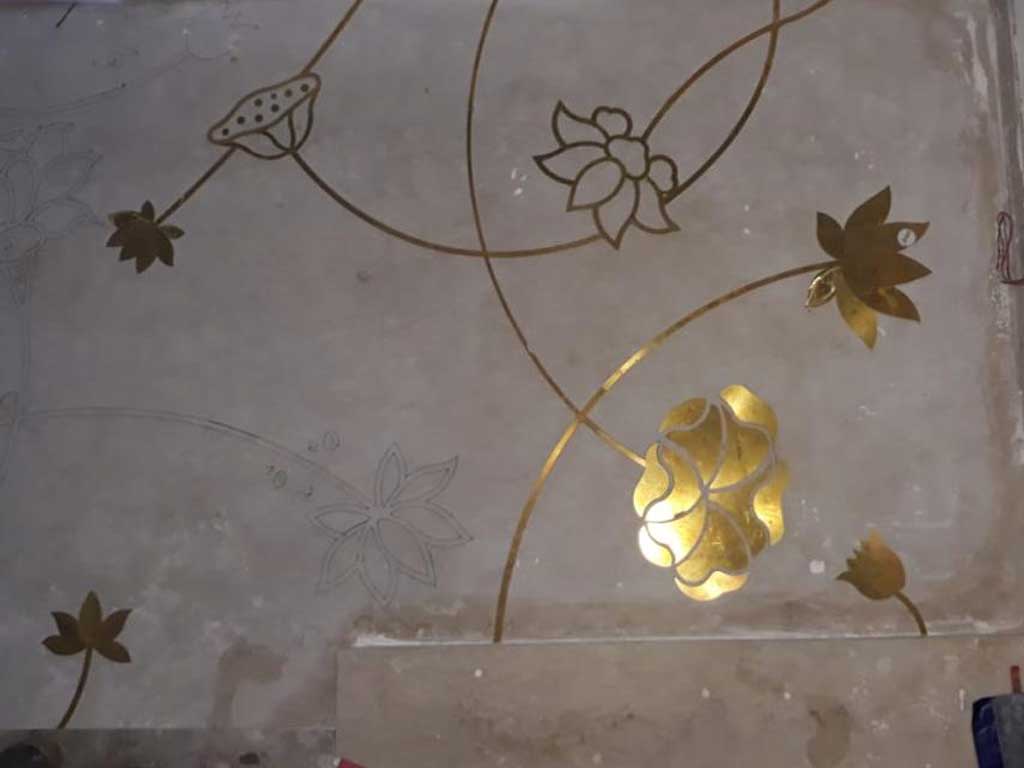
Metal
Thin metal strips or sheets, such as brass, copper, or silver, can be inlaid into the marble surface to create contrasting patterns. Metal inlay often adds a touch of opulence and modernity to the design.
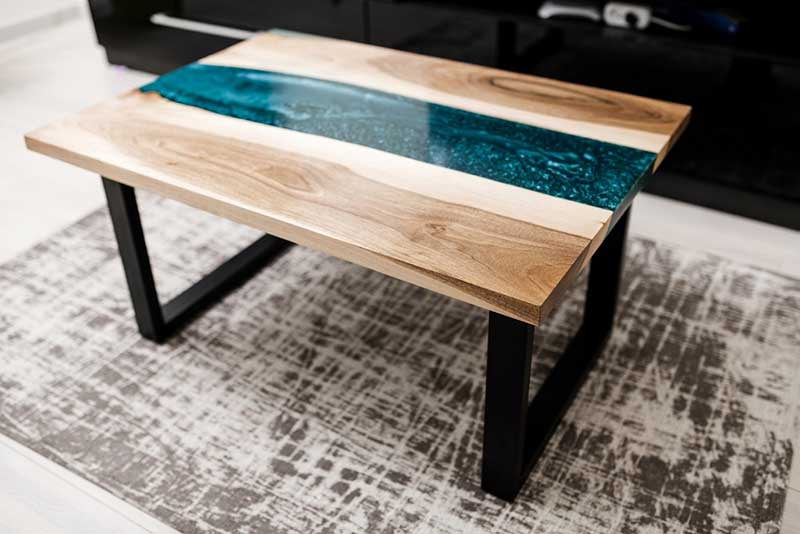
Resin
In contemporary interior design, colored resin is used to create vibrant and eye-catching inlay designs. Resin offers a wide range of color options and can be used to achieve modern and abstract designs.
These materials are skillfully cut, shaped, and arranged to create the intricate patterns and designs that are characteristic of marble inlay work. The choice of materials and the artisan’s expertise in combining them result in the stunning and visually captivating inlaid surfaces that adorn tabletops, flooring, wall panels, and other decorative items.
What is the installation process of marble inlay work?
The process of marble inlay work involves the creation of stunning designs on a marble surface using various colored gemstones or semi-precious stones. Here’s a step-by-step overview of the process:
- Material Selection – Skilled artisans begin by selecting a variety of colored gemstones or semi-precious stones. These stones are chosen for their unique colors, textures, and visual qualities.
- Design Creation – Detailed and elaborate designs are planned after that. These designs can be classical, traditional, modern, or abstract, depending on the desired aesthetic. Common motifs include intricate floral patterns, geometric shapes, and sometimes even customized images or logos.
- Stone Shaping – The selected gemstones are carefully cut and shaped into small pieces, often referred to as tesserae. These tesserae are usually tiny, irregularly shaped, and precision-cut to fit together seamlessly in the design.
- Marble Preparation – A piece of marble, which serves as the base for the inlay work, is selected and carefully cut to the desired shape. It is then polished to create a smooth and even surface.
- Design Transfer– The chosen design is transferred onto the polished marble surface. This serves as a guide for the artisan to create the inlay patterns.
- Inlay Process – Craftsmen use chisels and specialized tools to create small incisions in the marble where the tesserae will be placed. These incisions are made following the design, and they are created with precision.
- Stone Placement– The cut and shaped tesserae are then placed into the incisions in the marble one by one. Artisans take great care to ensure a perfect fit, alignment, and adherence to the design.
- Grouting and Filling- To secure the stones in place, grout or adhesive is applied around and between the tesserae. This ensures that the stones remain firmly inlaid within the marble surface.
- Polishing and Finish- Once all the stones are inlaid, the entire surface is meticulously polished to create a level, smooth, and shining finish. This step enhances the colors and textures of the stones, making the design come to life.
